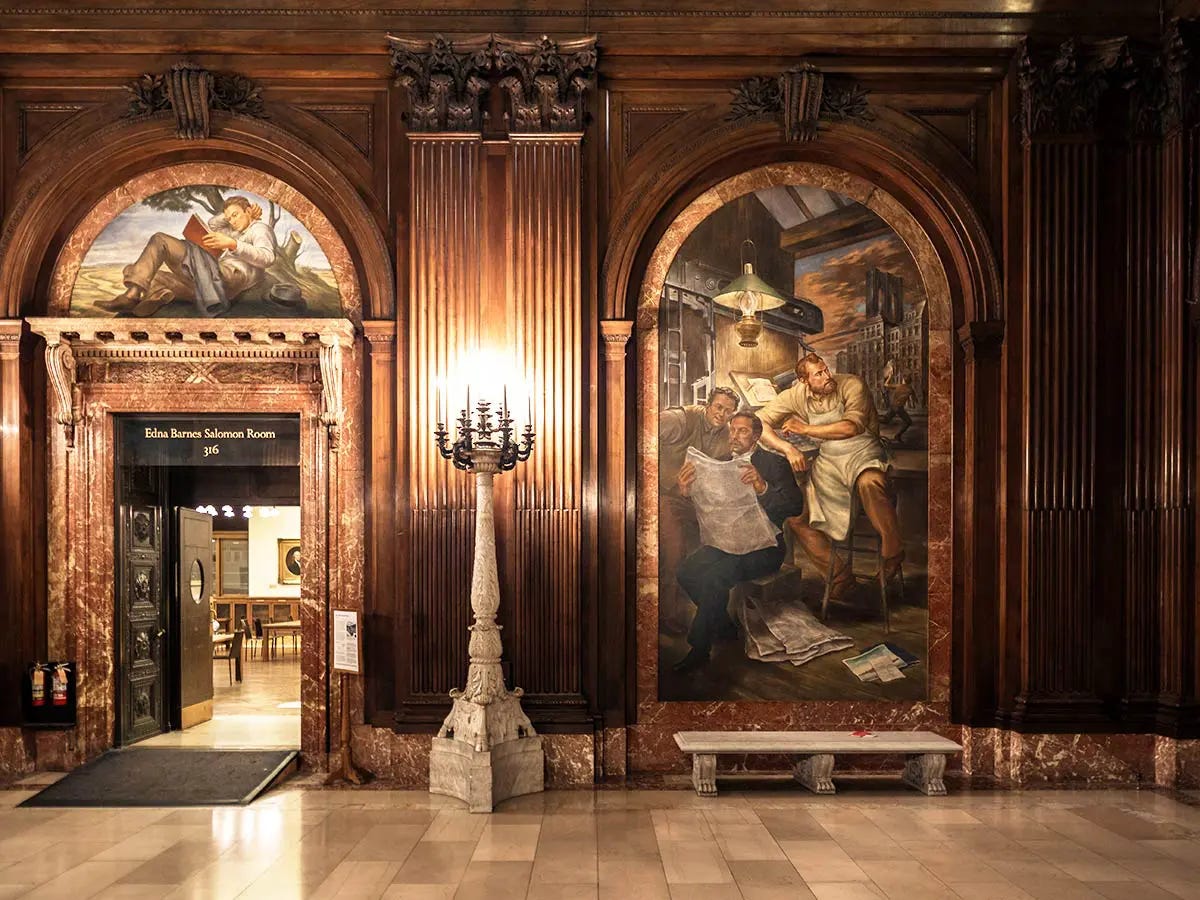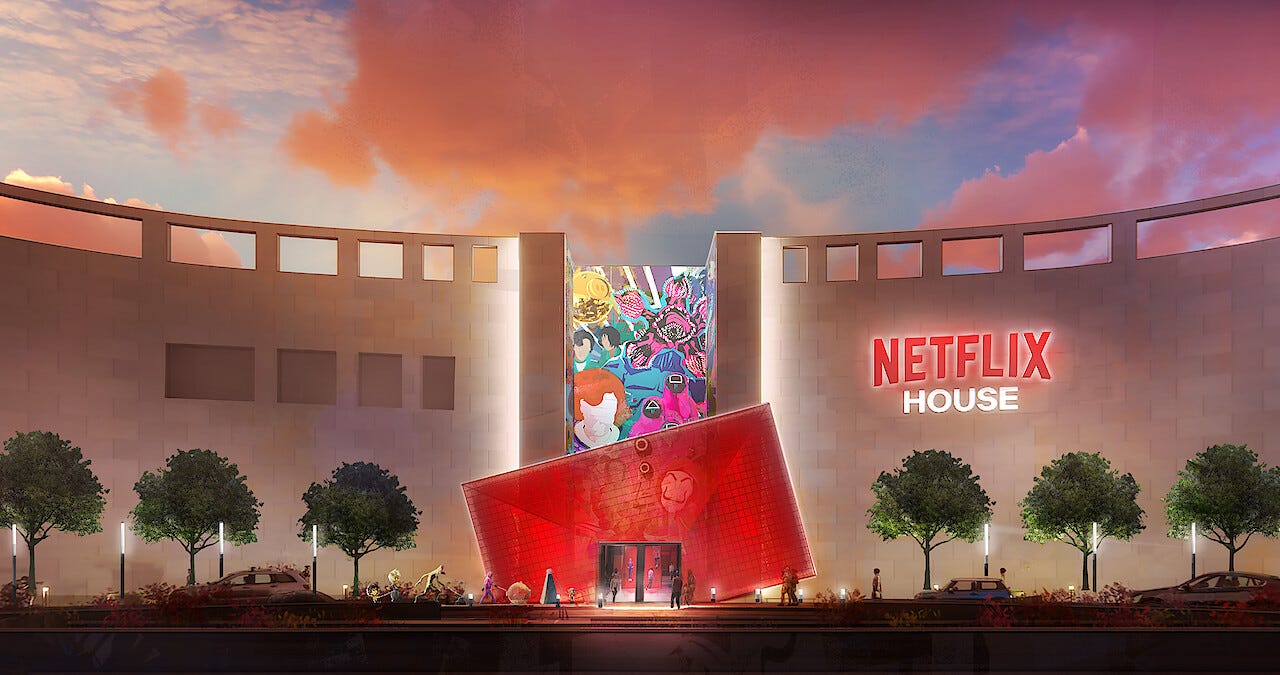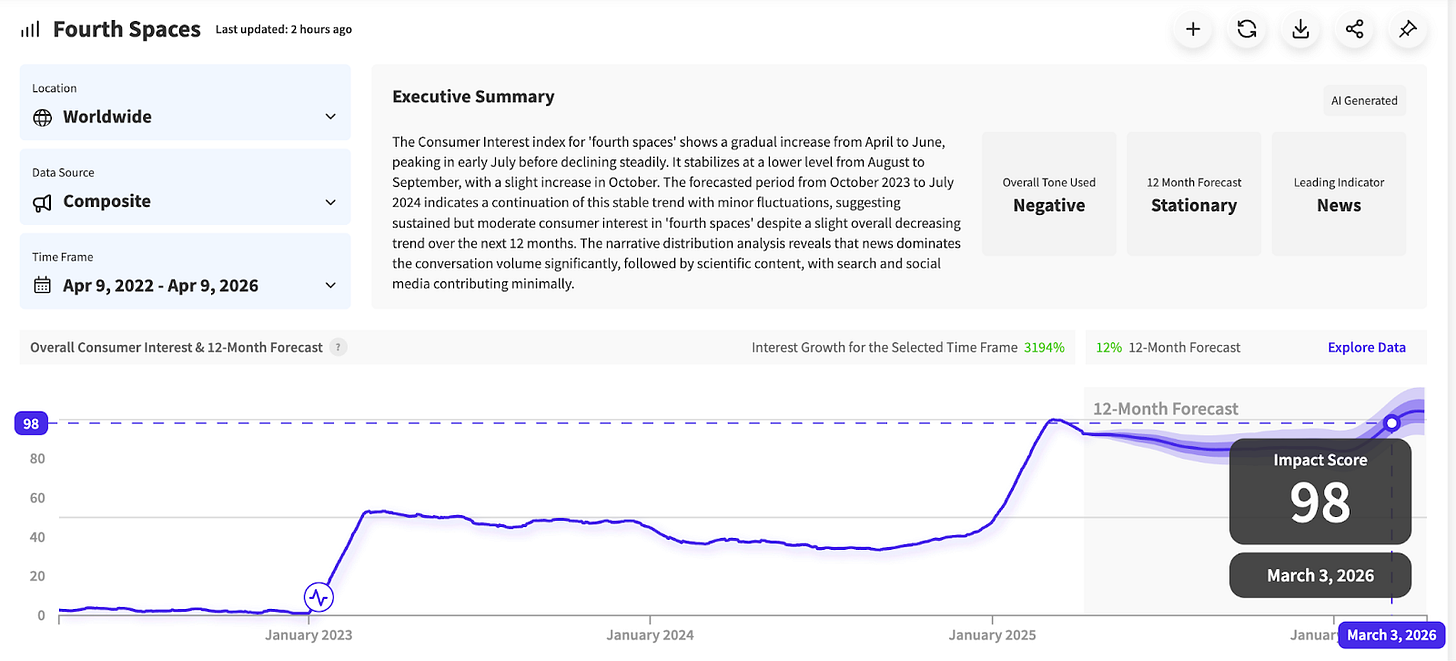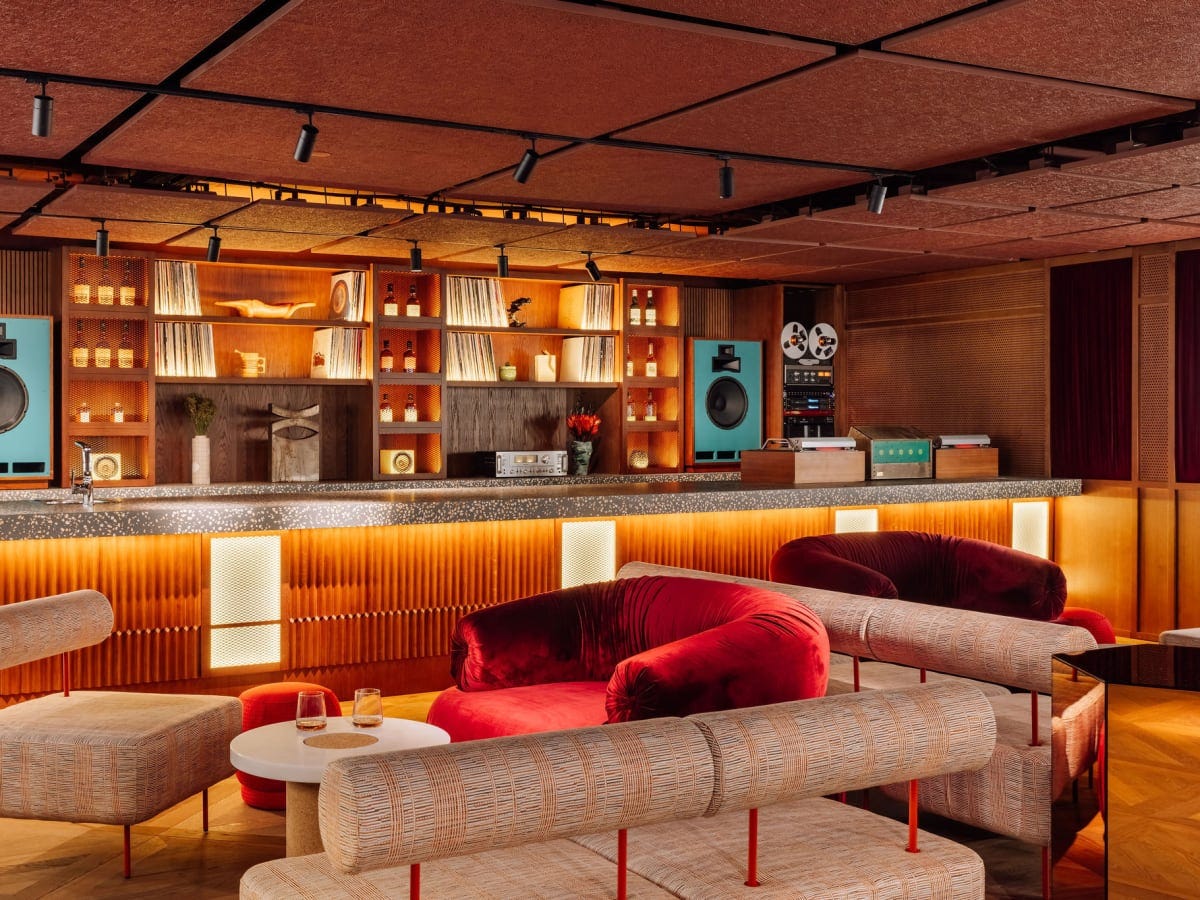Investing in Third & Fourth Spaces Will Strengthen Your Product Strategy
Evaluating business development opportunities for third and fourth space culture.
Hello, Market Navigators—
TLDR;
The post-COVID hunger for third spaces is a cultural shift that has become a business imperative.
Companies that address this deeper need for socialization will transform products from commodities into connection catalysts, while generating content, revenue, and loyalty.
Invest time identifying existing products for social consumption potential and the digital communities already forming around their categories.

Consumer interest in ‘third spaces’ spiked in early 2023—a response to lockdowns and social isolation.
This wasn’t a temporary reaction.
Instead, a fundamental shift in how people seek connection.
For CPG brands, collective discovery over individual engagement is an opportunity for new product introduction and adoption.
So, what are third spaces?
They aren’t your home (first space) or work (second space) but a (third space) where people gather, socialize, and build community. Classic examples include:
Parks
Libraries
Museums
Coffee Shops
While traditional third spaces required no purchase, modern venues now expect consumption.
Bathrooms and Wi-Fi are "customers only."
Finding places to “just exist” is becoming increasingly complex, which may explain the rapid growth in interest in libraries.
This tension—between wanting free gathering places while needing commercial spaces—creates the exact opening CPG brands need.
Consumers want to feel that the social value of a third space exceeds its transactional costs.
Why this matters now.
Historically, people derived their sense of community from religious affiliations.
Today, we live in an increasingly secular world but still crave that sense of community. This yearning could explain a resurgence in Christianity, not necessarily for faith but for the physical connection without financial pressure.
The evolution of third spaces reflects the shift in what is considered “high-status”
Slow living is replacing girlboss/ hustle culture
Wasting time beautifully is now aspirational
Midday hangouts signal privilege
The ultimate luxury is owning your schedule and doing whatever you want, whenever you want. — Eugene Healey
Luxury brands are investing in elevated third spaces.
Prada is opening its NYC café in 2026
Louis Vuitton opened Le Café in November
Aimé Leon Dore’s SoHo cafe typically has a waitlist to get in
The future of luxury third spaces will be multi-generational.
Having many children used to be seen as low-status. Today, the cost-of-living crisis has made having numerous children a luxury.
If you’re a new parent who can maintain a lifestyle similar to the one you had before having a child (being social, looking rested), then you’re perceived as high-status.
The convergence of luxury parenthood and a rapidly aging global population is creating a surge in interest for ‘multi-generational’ spaces.
Brands should identify growing third-space categories and partner with venues to allow customers to experience their products in new ways.
Land's End demonstrated this perfectly with their Brooklyn Craft Company partnership—a limited-edition tote with on-site customization that sold out quickly, generating immediate revenue and lasting social media content.
Third spaces under the category of ‘cafes’ are growing rapidly in market interest.
Why CPG brands should pay attention
A Cornell University study demonstrated that peers influence consumer decision-making—spending more when others are involved.
People tend to stay longer and consume more in these specialized spaces than traditional cafés, creating extended brand engagement opportunities.
Take note of the growing interest in creative educational spaces.
Miu Miu is hosting its inaugural literary club at cultural centers
Lectures at bars are sold out months in advance
Chess Clubs are popping up in chic restaurants
Gen Z and Millennials are bridging digital and physical worlds through "Fourth Spaces."
As Eventbrite CEO Julia Hartz explains in their latest cultural intelligence study:
"Rather than starting with a physical location and hoping a community develops, fourth spaces emerge organically from existing digital connections seeking deeper, real-world engagement."
Netflix recognized this opportunity by investing $18B in Netflix Houses, which are physical locations where online fandoms can gather around shared content interests. Visitors to these environments show stronger merchandise engagement than through traditional e-commerce channels.
Fourth Space fandoms are community accelerators.
Examples of how brands could leverage third and fourth space interest for product experiences and socialization
Pinterest “Nail Art” Pop-up
Pinterest knows it is the go-to place for people to find nail art inspiration. These pop-ups could feature screens where visitors curate Pinterest boards of designs they love. Then, skilled nail artists—recruited from the platform's most viral creators—bring these designs to life.
The space becomes a content creation studio for new pins and a showcase for trending styles, closing the loop between online inspiration and real-world application.
Campbell’s “Comfort Kitchen” Listening Lounges
Campbell's could create listening cafés that pair artisanal soup flights with curated audio experiences.
The spaces would create sensory associations between Campbell's products and moments of mindful relaxation.
Three action steps for brands to begin:
Audit your current product lineup for third-space optimization potential.
Which products could easily transition from individual to social consumption?
Identify digital communities already forming around your product categories. What physical spaces align with their features?
Test limited-run collaborations with established third spaces before investing in permanent branded environments.






















Stellar Article. Amazing breakdown
This is great! I have worked in luxury fashion for ten years, and this is exactly what we need. Great article, thank you for sharing.